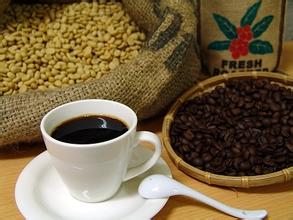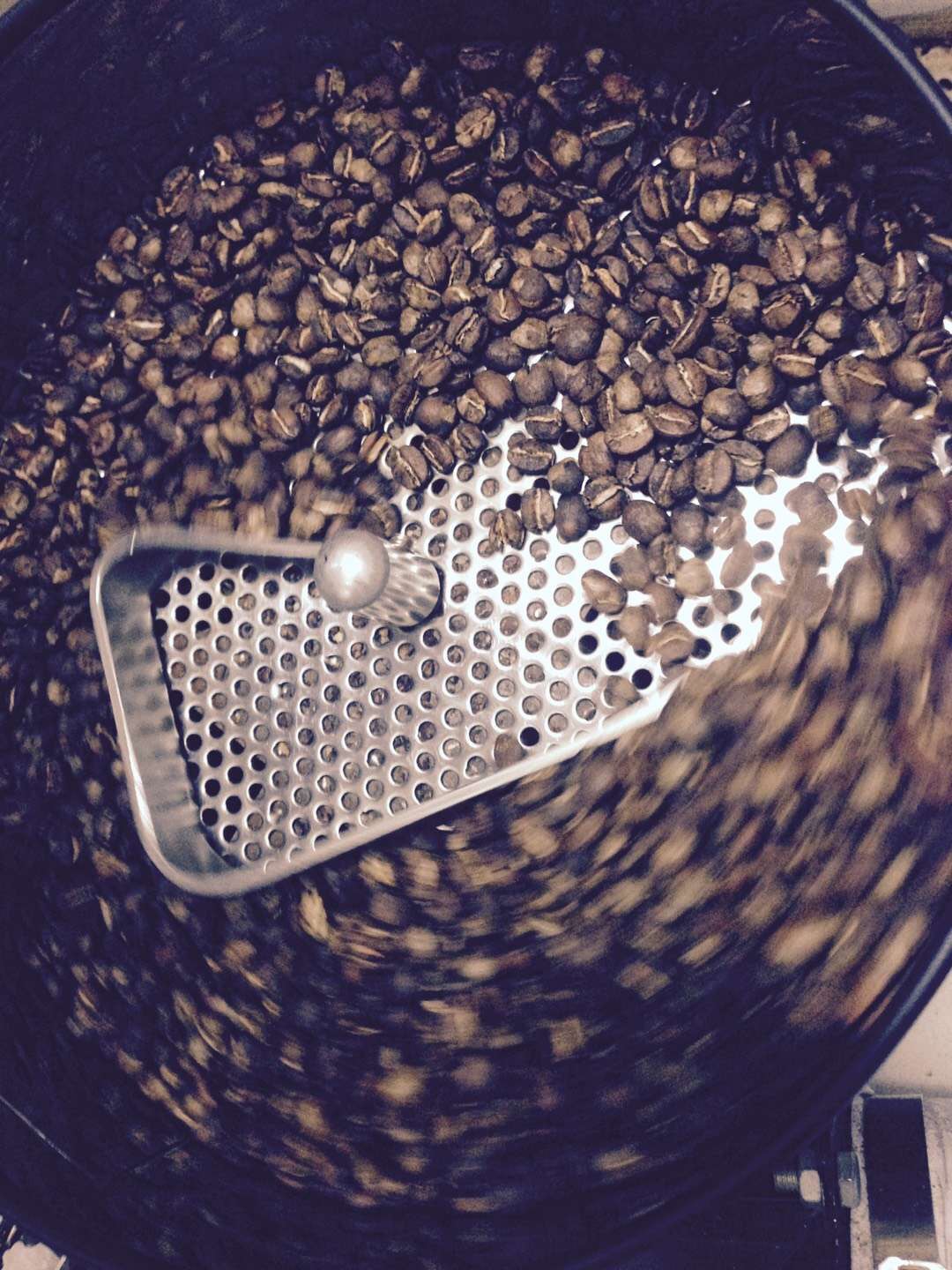Learn about coffee history and culture-Father of coffee tree
The father of the coffee tree
Martinique (martinque)
A small French island with an area of only 1100 square kilometers
It is the beginning of the history of coffee cultivation in Central America.
She witnessed the growth and destruction of an industry.
There is a special story about the spread of coffee from France to America.
Coffee trees imported from the Netherlands have been thriving in the Royal Botanical Garden in Paris in 1714. In 1723, French naval officer Gabriel Mathieu de Clay received orders to be sent to Martinique. Before leaving, I very much hope to take something with me as a souvenir. In the end, he took a fancy to the 1.5-meter-high coffee tree in the botanical garden.
In order to prevent the coffee tree from being eroded by salt during the voyage, he kept the coffee tree carefully in a glass box and covered it with soil dug out of the botanical garden. He tried to maintain the temperature around the tree and did not hesitate to water it with his own drinking water when there was not enough water for the tree.
Dirkley's colleague (actually the Dutch spy who received the secret order) thought he was crazy and wanted to break the branch in anger. Deckley was so worried that he dared not sleep for many nights, waiting for the coffee tree. Especially in times of danger of storms or pirates, his first thought was the safety of coffee trees.
Finally, Deckley finally transported the coffee tree safely to Martinique, and since then, the coffee tree has been planted on the vine-surrounded Caribbean land.
In 1726, the coffee tree bore fruit for the first time.
By 1777, there were 19 million coffee trees in Martinique. Some of them were sent to the Republic of Haiti, the Federal Republic of Dominica, Guadeloupe, Venezuela, Puerto Rico and other countries, and also spread to Central and South America led by Brazil and Colombia. As a result, the coffee tree on Martinique is also known as the father of the coffee tree.
Unfortunately, Klee was not able to witness the expansion of coffee planting in the end. He was not rich when he retired and returned to Paris, but he was still respected until his death. The French government not only forgave him for stealing coffee trees, but also built a monument to him in 1918 at the Ford Botanical Garden in Martinique in recognition of his contribution to the spread of coffee.
Unfortunately, the coffee farm in Martinique was almost paralyzed by the hurricane in the sea, and the local government restricted the coffee industry and encouraged the cultivation of bananas, sugar cane and pineapple on the coffee farm. As a result, the coffee industry in Martinique is not optimistic. Nowadays, there is so little coffee produced on this island that it can hardly be called "export". The more famous variety is "green pine".

[English name]: Martinique Coffee
[English name]: cafe Martinique
[material]: 100ml of deep-roasted coffee, 15g of sugar, 15ml of dark rum, 20ml of whipped cream, 1 cinnamon stick
[method]: pour sugar and coffee into the cup and cover it with stirred cream. Put the cinnamon stick on the plate.

Anecdotes
In youth, people grow their bodies, but when they reach adulthood, they no longer grow taller. Strangely enough, there is a unique island in the world where its residents are very tall, and tourists from abroad will grow several centimeters tall as long as they stay for a period of time. Because of this "nature" of the island, it is praised as "an island that can make people grow taller."
This magical island is called Martinique in the vast Caribbean Sea. Every 10 years or so, there is a strange phenomenon that puzzles people: the adult men and women living on the island have grown a few centimeters taller, with an average height of 1.90 meters for adult men and more than 1.74 meters for adult women. If the young men on the island are less than 1.8 meters tall, they will be ridiculed as "dwarfs" by their peers.
This kind of "courtesy" is obviously a "gospel" for some people who think they are short. As a result, Martinique attracts countless tourists every year, most of them short people from all over the world. When a short man comes to live on this island, he will inexplicably grow a few centimeters tall. therefore, people call Martinique "the paradise of the dwarf".
In fact, not only people, but also the animals, plants and insects on the island are growing rapidly. There are ants, flies, beetles, lizards and snakes on the island, which have increased several times in the 10 years or so since 1948, especially when the mice on the island are as big as cats.
Custom
The Fairbala people of Martinique also have a custom of never bending over. Even if the most valuable item is lost on the ground, they never bend down to pick it up, but pull out a bamboo clip inserted on their back and pick it up with a bamboo clip.
It is said that the Fairbala people never bend over because they have been bullied by other races in history. In the middle of the 17th century, Martinique was occupied by French invaders, who often insulted them and rode them like cattle. For this reason, a leader named Knightson jumped up when he was mounted by a French invader, threw him far away, and swore: "We Fairbala people will always stand and not bend over!" Since then, the nation has formed the habit of not bending over.

The capital
Fort France (Fort-de-France), population 100080 (1990); area: 1100 square kilometers; population: 385000 (1995), mainly black-and-white; population density: 350.5 per square kilometer; language: the official language is French. Creole dialect is also widely spoken; religion: most residents believe in Roman Catholicism; time difference: 4 hours later than GMT and 12 hours later than Beijing time; electricity: 220V AC,50Hz; Communications: telephone: IDD applicable. The country code is 596. International code 19. There are both payment phones and magnetic card phones on the island. Phone cards can be bought at the post office, but there are only magnetic card phones at the airport. Mobile phone: dual-band GSM network. Run the roaming protocol. Network providers include: France Telecom and Amis. The coverage extends to the French Antilles and French Guiana. Fax: most hotels can fax. Internet / email: local service providers (ISP) include wanadoo and Antilles-net. Post office: it takes about a week to send a letter to Europe. The post office is open from 7am to 6pm from Monday to Friday and on Saturday morning. Newspapers and periodicals: newspapers are French and have different prejudices. The main daily newspaper is: France

Dance
The ancient village of Belya, in the tropical forest north of Fort de France, is the best place to peek into Martinique culture.
A group of amateur actors, dancers and musicians perform a play that reshapes the daily life of the Creole community. Their performances include a variety of traditions and industries, including music and dance. Actors speak Creole and French when they speak, as do people in Martinique in their daily lives.

Creole originated in the early days of colonization. Its vocabulary is mainly French, but it uses the syntax of African languages. After centuries of evolution, Creole has become a completely independent language.
Although dance plays an important role in the local culture, games are equally important to the people of Martinique. In a small restaurant in any corner, tourists can meet people who play cards-people play more dominoes. In Martinique, domino players get seven dominoes each. But there are only three people at a table, so only 21 of the 28 are played. This makes it more of a game decided by luck. There are seven cards that are not included in the game, and you have to guess which cards are excluded. So it makes the game a little more complicated.
Cockfighting
The game played by Martinians depends on more than dominoes and cards. Cockfighting is also an important part. This is a deep-rooted social custom.
Cockfighting is as popular in Martinique as horse racing is in Britain and France, and cockfights can be seen all over the island. In Ramantan, just a few kilometers from Fort France, the cockfighting ring is located in the middle of the town, indicating that cockfighting is one of Martinique's favorite pastimes in this ancient West Indies tradition. Before the cockfight begins, weigh each chicken to make sure that the chickens fighting together belong to the same weight class. It often takes months for a cockfighting trainer to train a chicken into a top master.
Source:
Xuan Yu's Coffee World blog
Important Notice :
前街咖啡 FrontStreet Coffee has moved to new addredd:
FrontStreet Coffee Address: 315,Donghua East Road,GuangZhou
Tel:020 38364473
- Prev

A brief introduction to the historical development of coffee in Taiwan to understand the reasons for coffee in Taiwan
In the 18th century, 1884 (10 years of Guang Xu), the British were introduced to trial planting in the three Gorges of Taipei. during the Japanese occupation era, the Japanese saw that Taiwan's climate and soil were suitable for coffee, so they introduced "Arabica" from abroad and successfully planted it in the north. They invested heavily in Zhiben and Mizuho, and the yield was good. In the 19th century, Taiwan had rich coffee output and good quality and flavor, which led to the complete victory period of coffee in Taiwan.
- Next

When is the most appropriate time to stop baking?
1. Coffee bean color: because coffee beans show different colors when roasted to different degrees, color becomes the most commonly used basis for baking depth. This method can be applied to most coffee beans, but some coffee beans are special. For example, Kenya beans are much darker than ordinary coffee beans, so you should pay special attention at this time. two。 Baking time 3. Baking
Related
- What is the meaning of lactic acid fermentation with coffee bean treatment?
- How to judge the state of foam by sound?
- How does the latte pull out the unicorn pattern? Come to get for a little trick to improve the flower pull!
- Will flower pulling affect the taste of the latte?
- Do you know the history of coffee?
- The difference between honey treatment and sun washing what is raisin honey treatment?
- What kind of milk can a novice use to make coffee foam to keep the foam longer? The correct method and skills of milking tutorial sharing
- Why do washed coffee beans taste sour? Flavor characteristics of washed Coffee
- Introduction to the skill of how to practice the size and height of water injection around the circle of hand-brewed coffee
- How do beginners practice coffee flower drawing from scratch?

